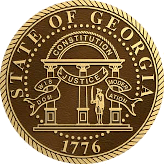North Georgia
Historic High Country
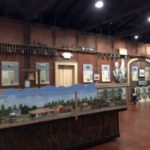
Adairsville Depot History Museum
A visit to this “Norman Rockwell” kind of town is a must for anyone who loves history, antiquing and good food! Browse the Adairsville Depot History Museum to learn local history detailing Adairsville’s pivotal role in the Civil War’s Great Locomotive Chase and beyond.
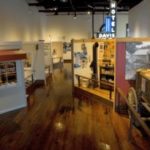
Bartow History Museum
Bartow History Museum documents the history of northwest Georgia’s Bartow County, spanning more than 200 years since the Cherokee were the area’s primary residents. Artifacts, photographs, documents, and a variety of interactive permanent exhibits tell the story of settlement, Cherokee life and removal, Civil War strife, and lifestyles of years past.
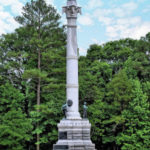
Chickamauga and Chattanooga National Military Park
With nearly 10,000 acres of the preserved landscape around the Chattanooga area, Chickamauga and Chattanooga National Military Park offers a wide variety of things to do. You can take a tour of the park either on your own or with a park ranger. You could go on a hike or engage in a variety of outdoor activities in the park. There are also two park visitor centers where you can explore the park’s story in indoor exhibits.
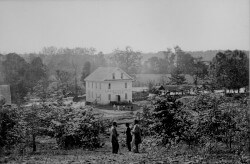
Lee & Gordon's Mills, Chickamauga
The mill was occupied by both Confederate and Union armies. The Confederate under General Bragg the first few days of September 1863. Later September 19, 20 1863, General Rosecrans stationed a detachment at the mill to prevent Confederates from crossing the creek. You will be taken back into another century soon as you enter the old Grist Mill. The walls in the general store are completely covered with many different items found in one of the three floors of the mill or on the surrounding grounds. It is absolutely astonishing for its visitors.

Pickett's Mill Battlefield State Historic Site, Dallas
Pickett’s Mill is one of the best preserved Civil War battlefields in the nation. Visitors can travel roads used by Federal and Confederate troops, see earthworks constructed by these men, and walk through the same ravine where hundreds died. An authentic 1800s pioneer cabin is furnished and open for tours during certain events.
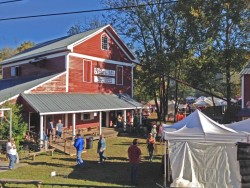
Prater's Mill Foundation, Varnell
Prater’s Mill offers a fascinating peek into the rural heritage of northwest Georgia. Visitors can still see the original set of French Buhr millstones in action when the miller opens the gates to flood the forebay. The Leffel turbine wickits are then opened, and the power of the water starts the mill stone spinning. The corn is then added into the hopper, and the “Damsel” starts her chatter. The corn is slowly dropped onto the millstones to be ground into meal.
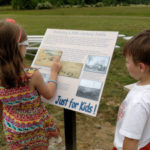
Resaca Battlefield Historic Site
Walk the six-mile trail of hallowed ground where much of the heaviest fighting occurred at the start of Sherman’s Atlanta Campaign.
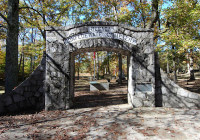
Resaca Confederate Cemetery
Returning to their land, they found the dead Confederate soldiers still lying on the battlefield area where they fell or buried in shallow graves around their home. Col. Green’s daughters Mary and Pyatt were upset by the sight and decided to collect the bodies and give them proper burials. Mary Green started the Resaca project without any money in July 1866, finished it at the end of October and all debts was paid by the end of December 1866.
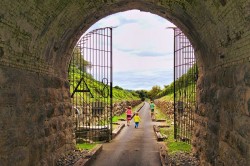
Tunnel Hill Heritage Center
Experience more than 160 years of railroad and Civil War history at Tunnel Hill Heritage Center and Museum. Explore a true engineering marvel: the Western & Atlantic Railroad Tunnel. Completed in 1850, it was the first major railroad tunnel in the South and the first through the Appalachian Mountains. Take the guided tour to see original drill marks made during the construction of the tunnel and see where the Civil War’s “Great Locomotive Chase” came through in 1862. Walk in the footsteps of Union and Confederate soldiers as you step into the historic Clisby Austin House which was used as a Confederate field hospital in 1862-1863 and as a headquarters for Union General William T. Sherman in May of 1864 as he planned his famous Atlanta Campaign.
Central Georgia
Atlanta Metro
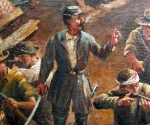
Atlanta History Center
Visitors have much to see at Atlanta History Center with expansions and new offerings upon the completion of the 23,000-square-foot Lloyd and Mary Ann Whitaker Cyclorama building opening in 2019. The facility is the new home of the massive Battle of Atlanta Cyclorama painting, restored to its intended size at 42 feet high and 358 feet long. It joins the refurbished historic Texas steam engine.
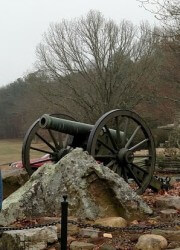
Kennesaw Mountain National Battlefield Park
Kennesaw Mountain National Battlefield Park is a 2,965 acre National Battlefield that preserves a Civil War battleground of the Atlanta Campaign. Opposing forces maneuvered and fought here from June 19, 1864, until July 2, 1864.

Marietta Confederate Cemetery
The Marietta Confederate Cemetery came into being in September of 1863. The bodies of men who died during the Battle of Chickamauga were interred in the cemetery after the war. When you visit here, you will find over 3,000 graves from confederate states and including Kentucky, Missouri, and Maryland. Men who later died in the Old Soldier’s home in Atlanta after the war were the last burials except for one man. The Old Soldier’s home burials are all in marked graves.

Marietta Museum of History
Marietta Museum of History - move to historic places under the subtitle of "Atlanta metro" and change to Marietta Museum of History/ Kennesaw House and use this for intro: Originally built as a cotton warehouse in 1845, the building was remodeled to become the Fletcher House Hotel in 1855. During the Civil War the hotel temporarily served as a makeshift hospital and morgue. For this reason, the building has become the subject of many stories and local ghost folklore. Today the museum houses galleries and exhibits featuring collections from General History, Home Life, and Military.
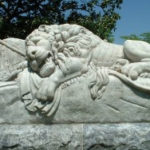
Oakland Cemetery
Historic Oakland Cemetery is Atlanta’s oldest public park and the final resting place of many of the city’s most noted citizens. Less than a mile from downtown, its 48 acres are full of treasures – history and gardens, sculpture and architecture, ancient oaks and magnolias. It’s a wedding venue, a green space, an art gallery, a classroom space, and a place to celebrate the city’s rich and fascinating past and future.

Southern Museum of Civil War and Locomotive History
The Southern Museum is a history center dedicated to educating, inspiring, and enriching people about the strategic and economic use of railroads during and after the Civil War.
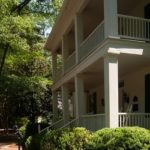
Stately Oaks Plantation, Jonesboro
We are excited to have you visit our historic home. Stately Oaks is a plain Greek Revival antebellum home located in Clayton County, Georgia, " The Home of Gone with the Wind." Along with the main house, guests may tour the original cook's log cabin, one-room schoolhouse, Creek Indian Village, Juddy's Country Store, and much more.
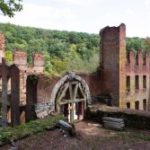
Sweetwater Creek State Park
Sweetwater Creek State Park is a peaceful tract of wilderness only minutes from downtown Atlanta. A wooded trail follows the stream to the ruins of the New Manchester Manufacturing Company, a textile mill burned during the Civil War. Beyond the mill, the trail climbs rocky bluffs to provide views of the beautiful rapids below. Additional trails wind through fields and forest, showcasing ferns, magnolias, wild azaleas and hardwoods.
Historic Heartland

Cannonball House
The Cannonball House is an 1853 Greek Revival home built by Judge Asa Holt. The house was struck by Federal artillery in July 1864 during General George Stoneman’s Cavalry raid. The house contains the founders’ furniture for the two oldest sororities in the world, Adelphean and Philomathean. In addition, the house has a Confederate military collection as well as other period furnishings. The original brick kitchen and servants quarters still stands behind the main structure. An English garden surrounds the house and kitchen.

Jarrell Plantation
Nestled in the red clay hills of Georgia, this cotton plantation was owned by a single family for more than 140 years. It survived General Sherman’s “March to the Sea,” typhoid fever, the cotton boll weevil, the advent of steam power and a transition from farming to forestry. "Dating back to 1847, through generations of family members, Jarrell Plantation Historic Site is one of the last remaining examples of a vanishing culture with its authentic nineteenth and early twentieth-century plantation buildings typical to Middle Georgia representing the change from an agricultural to an industrial-based economy. "
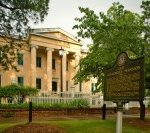
Old Governor’s Mansion
Completed in 1839, Georgia’s Old Governor’s Mansion is one of the finest examples of High Greek Revival architecture in the nation. The Mansion’s history encompasses the antebellum, Civil War, and early Reconstruction phases of the state’s history. Such noted state leaders as George Crawford, Howell Cobb, and Joseph E. Brown resided in the building and used it as a stage for speeches and also to introduce guests of national standing.

The T. R. R. Cobb House
The T.R.R. Cobb House is poised to serve a unique educational purpose for Athens and the surrounding region as a museum and resource center illuminating the life, character, and accomplishments of Thomas Reade Rootes Cobb, as well as aiding those interested in the history of the South during the 19th century. It is much more than merely a museum. It's a historic facility dedicated to historic conservation and conversation.
Classic South
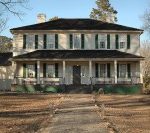
A.H. Stephens State Park/ Liberty Hall
The historic architecture, gently rolling hills, forested trails and placid lakes of A.H. Stephens Historic State Park, once home to the Vice President of the Confederacy and later the ‘boys’ of the Civilian Conservation Corps, now provide you an oasis of natural and historical beauty for recreation, reflection and relaxation.
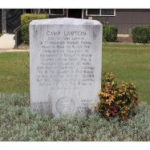
Magnolia Springs State Park, Millen
During the Civil War, this site was called Camp Lawton and served as “the world’s largest prison.” Today, little remains of the prison stockade; however, the earthen breastworks which guarded it may still be seen. During 2010, Georgia Southern University archeology teams uncovered the stockade wall and numerous personal articles from soldiers. Their discovery has been heralded as one of the most significant finds in recent history. Artifacts are currently on display at the university and at the Camp Lawton museum located at Magnolia Springs State Park.

Robert Toombs House State Historic Site, Washington
A legend in his own time, Robert Toombs was a successful planter and lawyer who led a turbulent career as state legislator, U.S. Congressman and Senator. “Defend yourselves; the enemy is at your door...!” thundered Toombs from the Senate floor on January 24, 1860. The following year, Georgia seceded from the Union and Toombs personified the South by evolving from conservative Unionist to fire-breathing secessionist. After serving just five months as Confederate Secretary of State, he resigned to serve as brigadier general in the Army of Northern Virginia. In 1870, as the Reconstruction Era drew to a close in Georgia, Toombs felt that Georgia should live under a constitution of her own making. His last service to Georgia citizens was helping create the Constitution of 1877, which was not amended until 1945. Visitors are welcome to tour the house and grounds, and view exhibits and displays.

Uncle Remus Museum
The Uncle Remus Museum strives to educate visitors about the life and work of Joel Chandler Harris using historic storytelling, period artifacts, dioramas of the more famous Uncle Remus character, local history during Harris' formative years, and informative tours.
Presidential Pathways
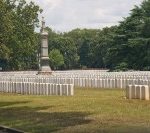
Andersonville National Historic Site
Andersonville National Historic Site is the only park in the National Park System to serve as a memorial to all American prisoners of war. Congress stated in the authorizing legislation that this park’s purpose is “to provide an understanding of the overall prisoner of war story of the Civil War, to interpret the role of prisoner of war camps in history, to commemorate the sacrifice of Americans who lost their lives in such camps, and to preserve the monuments located within the site.” The landscapes of Andersonville National Historic Site serve as an ideal location to research and explore the people, places, and stories that illustrate the prisoner of war experience and the significant cultural resources cared for and preserved by the National Park Service.
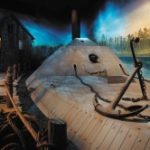
National Civil War Naval Museum
Located in Columbus, Georgia, the National Civil War Naval Museum overlooks the Chattahoochee River. They house the most significant surviving Confederate warship, the CSS Jackson, as well as the wreckage of the CSS Chattahoochee. Other exhibits include a replica of the USS Hartford with its berth deck, wardroom and captain’s cabin, an actual cutter or “ship’s boat” from the USS Hartford, a full scale replica of the USS Monitor’s famous turret, and an immersive panoramic dockside exhibit recreating Plymouth, North Carolina, complete with an exterior and interior view of the CSS Albemarle.
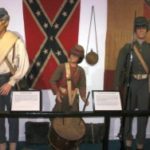
The Drummer Boy Civil War Museum
Exhibits at this museum include Civil War uniforms, guns, swords, documents, and photographs. Mannequins wearing 15 authentic Civil War uniforms, both Union and Confederate, including a colorful red and blue New York Fire Zouave uniform and a Union and Confederate drummer boy uniform complete with original drums, dominate the museum. An extensive collection from the estate of Gen. Thomas T. Eckert, president of Western Union and chief of the United States Military Telegraph Department under President Lincoln, is a part of the museum. Included is Mary Surratt’s bonnet, which was removed from her head and given to Eckert just before her hanging, along with others convicted in the Lincoln assassination conspiracy.
Magnolia Midlands
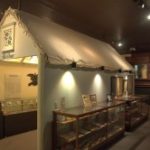
Fitzgerald Blue & Gray Museum
Designed to tell the heart-warming story of how Yankee and Confederate veterans created Georgia’s City of Harmony, The Blue and Gray Museum showcases a rare collection of Civil War relics and artifacts. The Blue and Gray offers a unique way to honor America’s veterans from 1860 to the present.
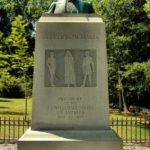
Jefferson Davis Memorial State Historic Site
Jefferson Davis Memorial State Historic Site When Confederate President Jefferson Davis and a few remaining staff members crossed into Georgia, they were headed towards Texas, where Davis planned to unite forces to continue fighting. On May 9, 1865, they camped in this pine forest, and at dawn, Davis was taken, prisoner. Today, a monument marks the spot where he was arrested.
South Georgia
Georgia's Coast

Fort McAllister State Park
Located close to I-95 south of Savannah on the banks of the Ogeechee River, this scenic park showcases the best-preserved earthwork fortification of the Confederacy. The earthworks were attacked seven times by Union ironclads but did not fall until 1864—ending General William T. Sherman’s “March to the Sea.” Visitors can explore the grounds with cannons, a hotshot furnace, bombproof barracks, palisades and more, while a Civil War museum contains artifacts, a video, and a gift shop.
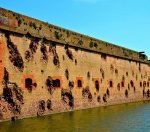
Fort Pulaski National Monument
A Turning Point in Military History: For much of the 19th century, masonry fortifications were the United States’ primary defense against overseas enemies. However, during the Civil War, new technology proved its superiority to these forts. The Union army used rifled cannon and compelled the Confederate garrison inside Fort Pulaski to surrender. The siege was a landmark experiment in the history of military science and invention.
